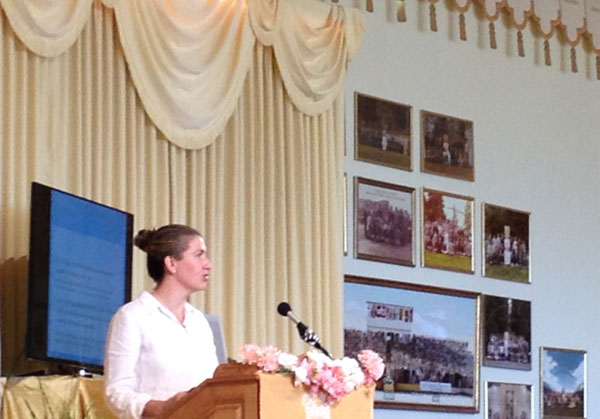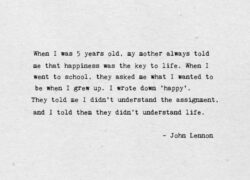Physicist Amanda Weltman: Using Knowledge for Good

Born in Massachusetts and raised in South Africa, Amanda Weltman completed a distinguished undergraduate career at the University of Cape Town and then pursued her graduate education at Columbia University in New York City. She completed her PhD under the supervision of renowned string theorist Brian Greene in 2007. Amanda then joined the faculty at the University of Cape Town and took a postdoctoral position at Cambridge University’s prestigious Centre for Theoretical Cosmology in the Department of Applied Mathematics and Theoretical Physics that same year.
Growing up, Amanda’s family treasured reading, leaning and math. With her focus on theoretical physics, she is well known for proposing the Chameleon field—a particle that might be responsible for causing the observed accelerated expansion of the universe. Amanda is a Next Einstein Forum Fellow and has won awards including the National Women in Science award for the Best Emerging Young Researcher in the Natural Sciences and Engineering, the Meiring Naude Medal from the Royal Society of South Africa, the NSTF-BHP Billiton, TW Kambule Award, and the Silver Jubilee medal from the South African Institute of Physics.
Amanda, who is a mother, turns her focus on the betterment of education as well. She promotes science education especially and is actively engaged in organizations in several countries to implement programs for girls, including work with the Clinton Global Initiative, “1000 Girls, 1000 Futures.”
JH- You have been widely recognized for your brilliant contributions in the field of physics. As a student, what about the study of physics attracted you?
AW- I love solving problems. And I love mathematics and I love understanding the world around me. Physics is the most precise way to do this.
JH- How does the study of physics benefit humanity?
AW- The benefits are varied and often unpredictable before the fact. Technology is the most obvious place where we can see the benefits directly – from GPS technology to TVs, computers, the world wide web, all technology based on lasers. There are also many areas of medicine that benefit from physics – laser therapies, neutron therapies, Xray, ultrasound and MRI technologies. There are so many benefits – the list is very long! There are also some less direct benefits, like for example those from astronomy – helping us to understand our universe around us creates a sense of humility and where we may belong in the greater picture. More directly – imaging of the earth from a distance can help with crop analysis and more accurate irrigation systems. Physics is also used for developing new, renewable and green energy. Military applications also abound, although they may feel less good for humanity, if there is a reluctance to go to war then that is a good thing. Radar technology, sonar technology, missiles etc – all use physics.
JH- When did you learn the Transcendental Meditationtechnique and how has it affected you?
AW- I first learned when I was about five. I did not keep the habit and forgot about it until I learned again around 2008. It was a time in my life when TM was really most welcomed and I found that it helped me to settle my mind at times when it can feel overfull or harried. A settled calm mind is of extraordinary value to anyone but especially for me as a mother and a scientist.
JH- What are the areas of focus that excite your interest for future research?
AW- I think right now astronomy is entering into a golden age in synergy with physics and it is a very exciting time to be looking out at the sky and an opportune moment to be a theorist who gets the chance to explain some quite exotic phenomena out there.
JH- Sounds wonderful. Anything else you would like to share?
AW- I think that this coming generation have so many resources available to them. Technology is so advanced that we all walk around wearing devices and carrying apps that allow us to observe our heart rates, sleep cycles, step counts, body temperature, etc. at all times while also being able to look anything up in a portable searchable encyclopedia. We are also able to talk to anyone, no matter how far away, instantaneously and to form large groups of people who do not know each other but share some kind of interest – be it parenting or lego or meditation.
We have so many tools for a good and interesting life right at our fingertips, and yet we are seeing a rise in anxiety and mental health related issues, a rise in obesity and general health related issues, and growing discord within social networks, nations and across the world.
While it may feel hard to impact the world on a larger scale, I think we should all be finding ways to improve ourselves. That is the only place we can start, and, in that way, we can slowly change the world. We need to use the connectivity of the world for good. We should unfollow the toxic influences and choose very carefully what we let appear on our devices and into our brains and bodies. We should all find time to separate ourselves from this connected world and reconnect ourselves to our own world, our families, the earth we stand on and our own inner worlds.
The great British mathematician Ada Lovelace used to say that she had great breakthroughs because she would see them in her dreams. This is not uncommon. The great Indian mathematician Srinivasa Ramanujan used to say that his theorems appeared to him as if gifted by God. There is no doubt that a different kind of connection plays a fundamental role in discovery. For some this may mean sleep or prayer, for others meditation can play this role in a deep and important way. There is no coincidence that we say “I will sleep on it” before making big decisions. The role of the unconscious or subconscious mind in discovery, insight and deep thought is still not yet fully understood. Thankfully we do not need to understand a plane to fly in it. So take the time to be with yourself, let yourself soar!
About the Author
Janet Hoffman is the executive director of TM for Women Professionals, a division of TM for Women in the USA





